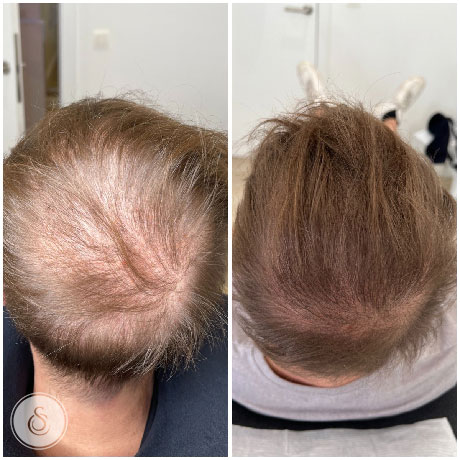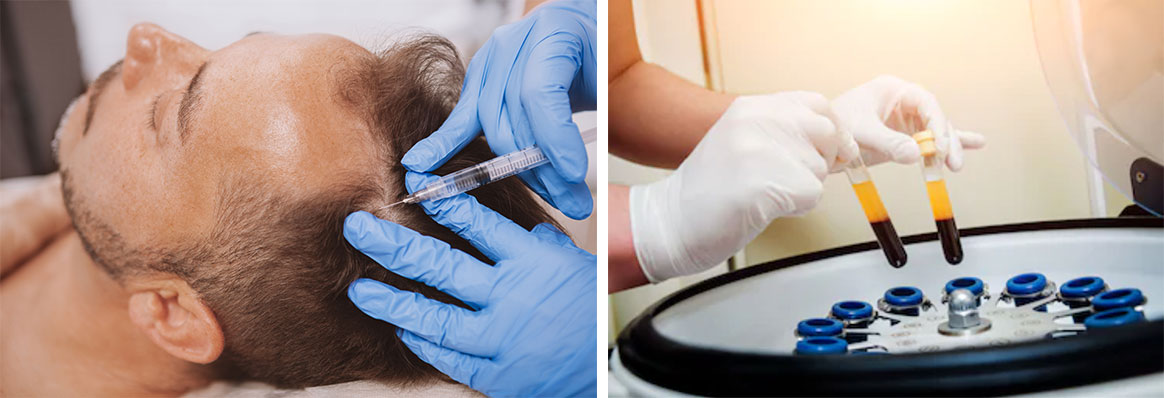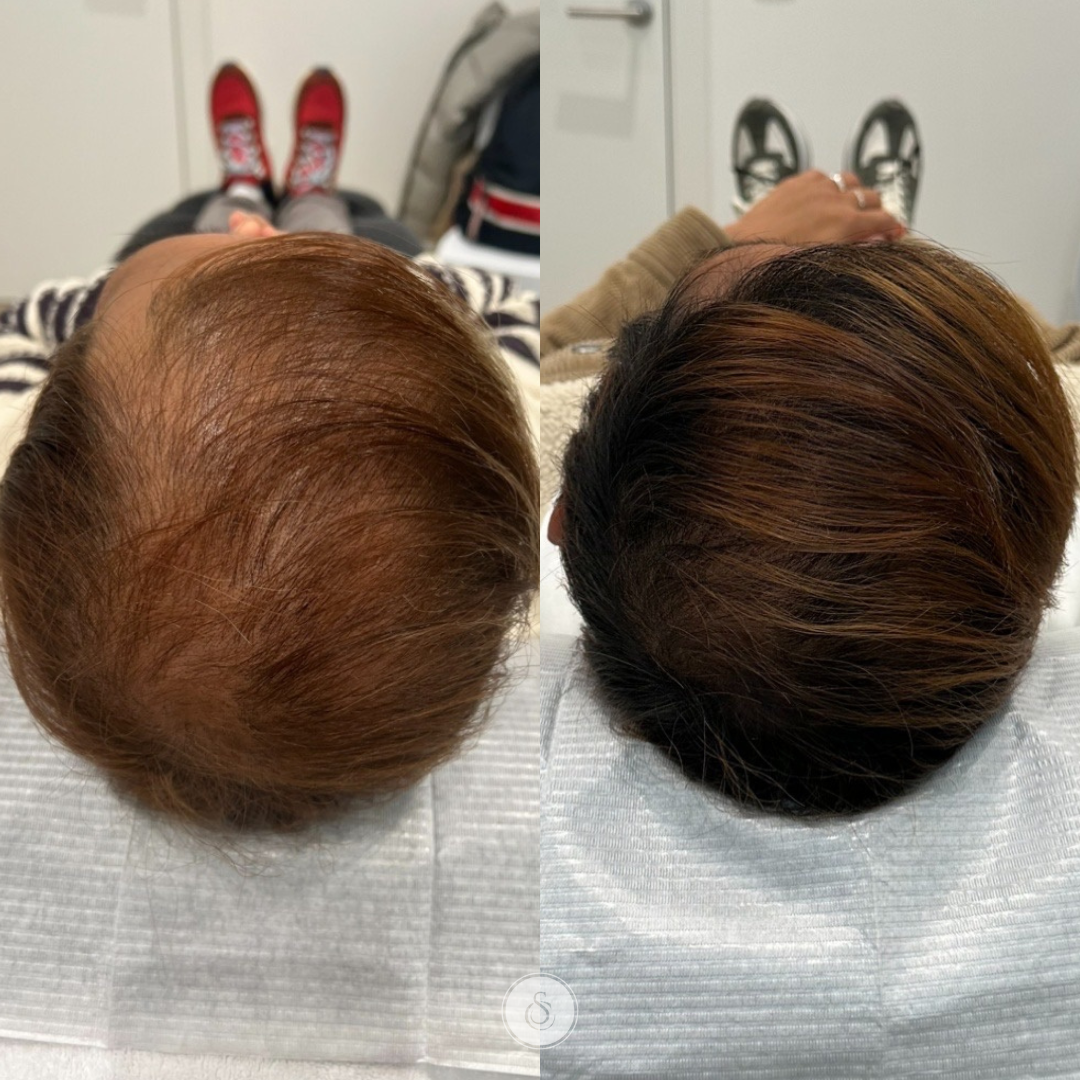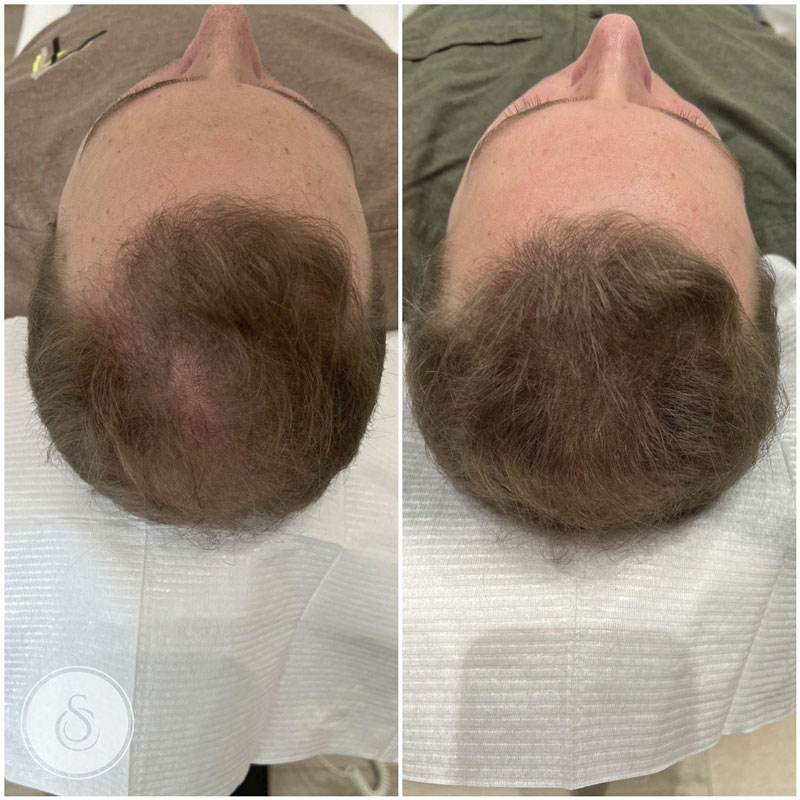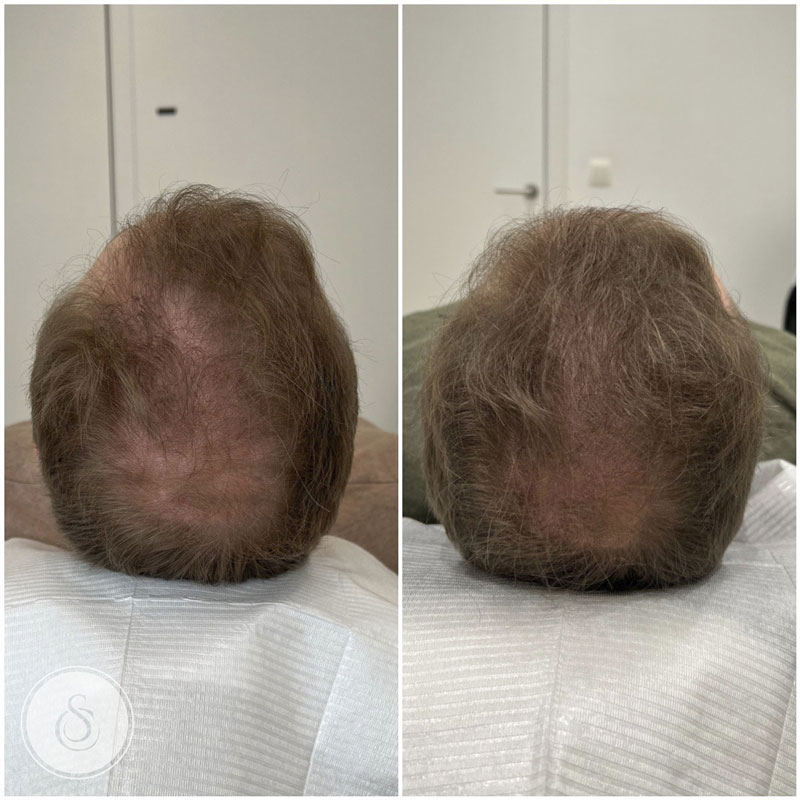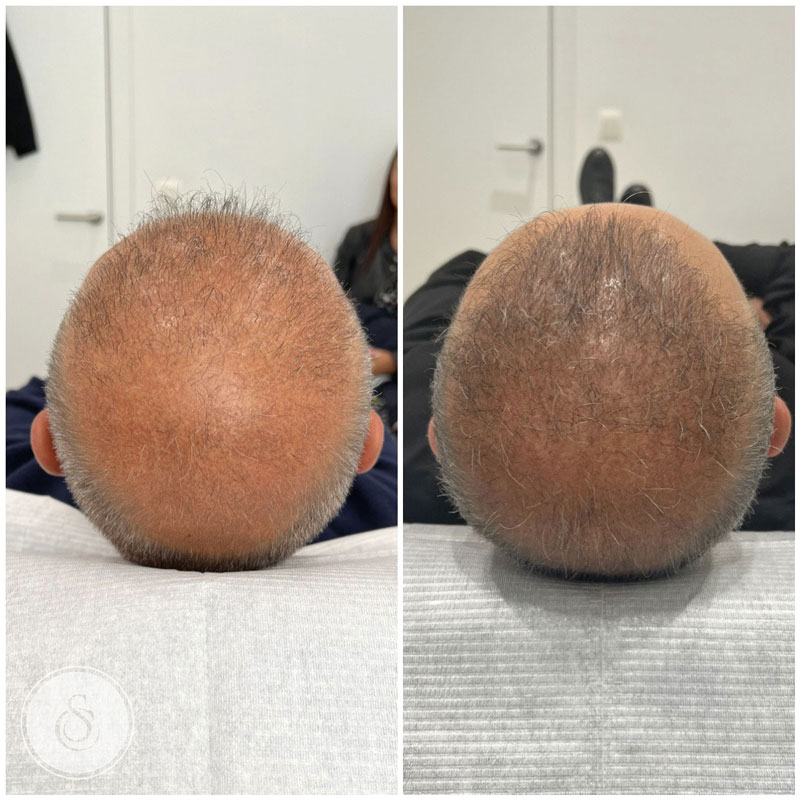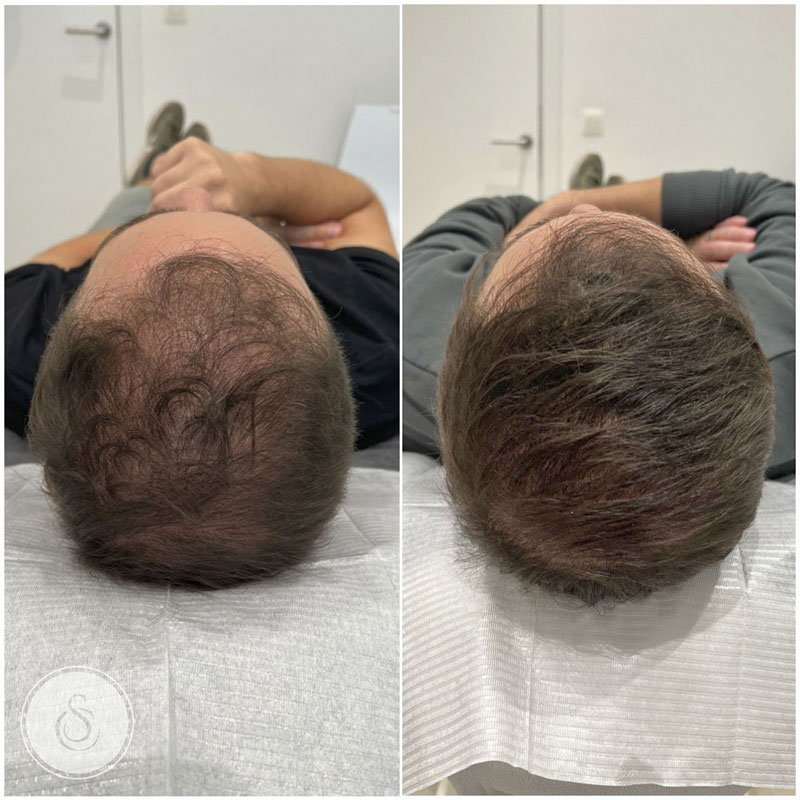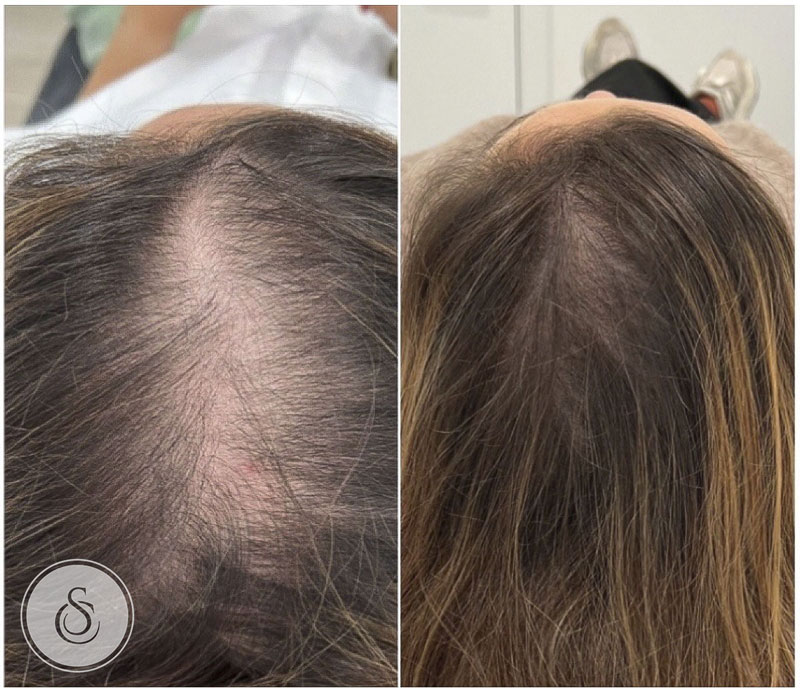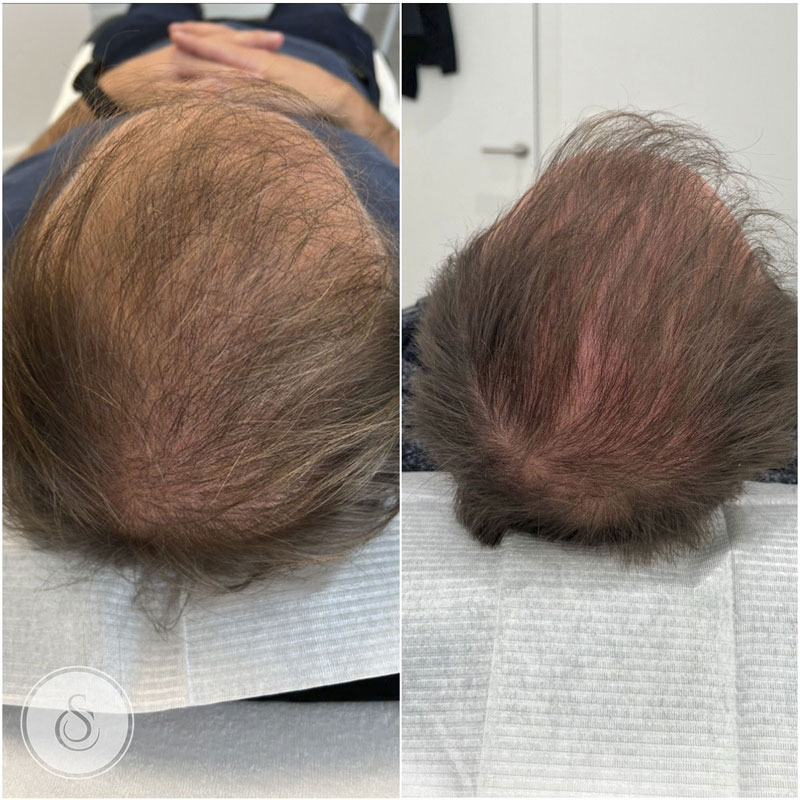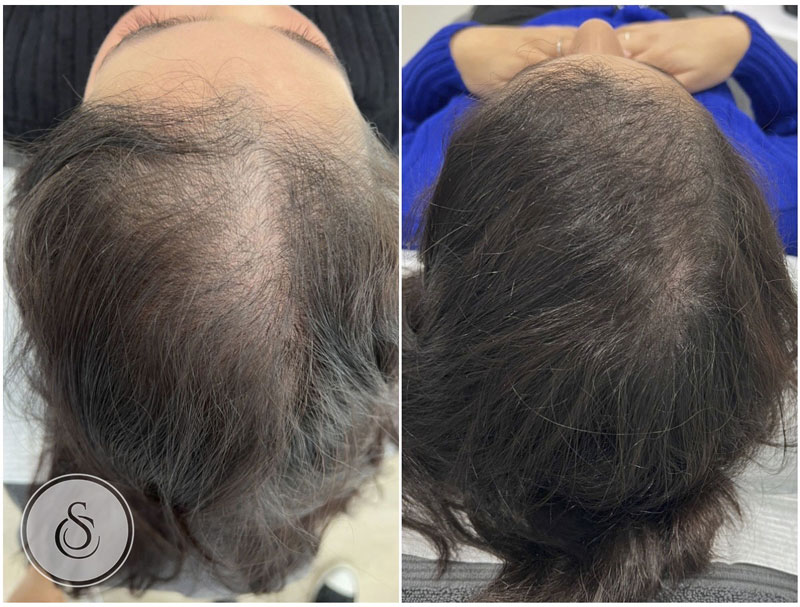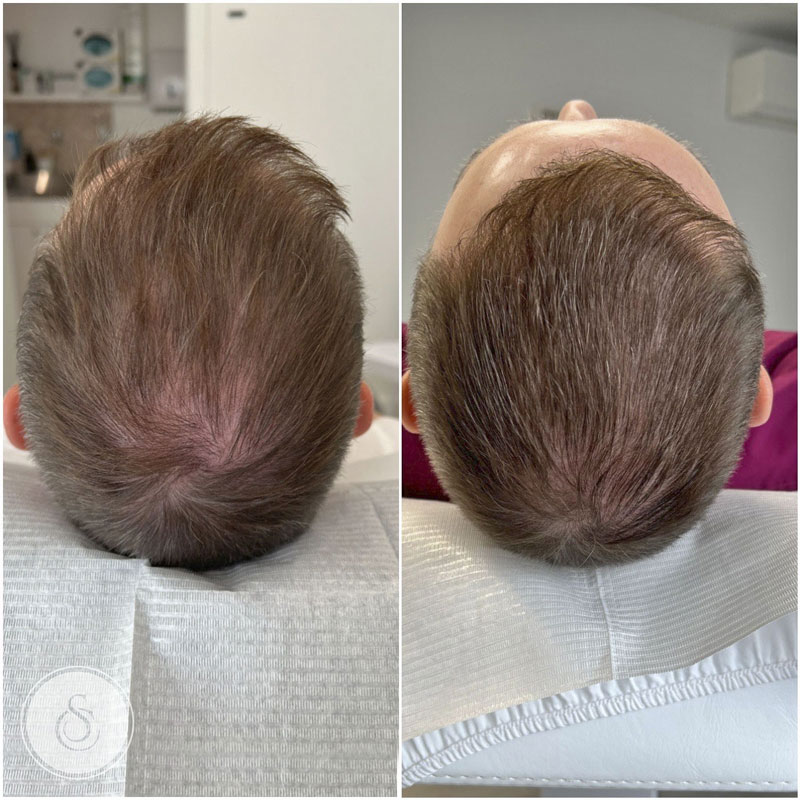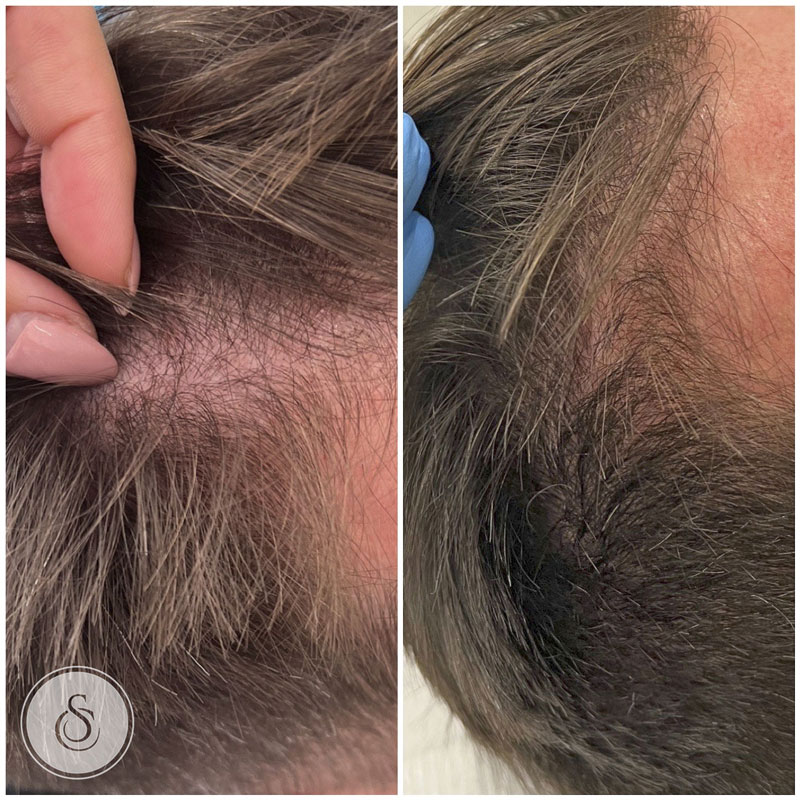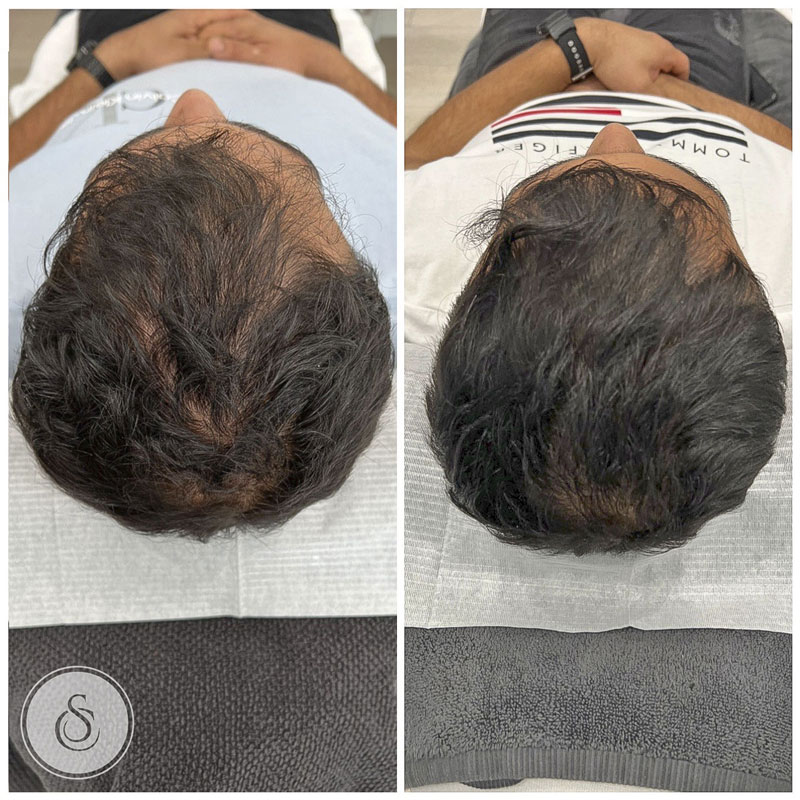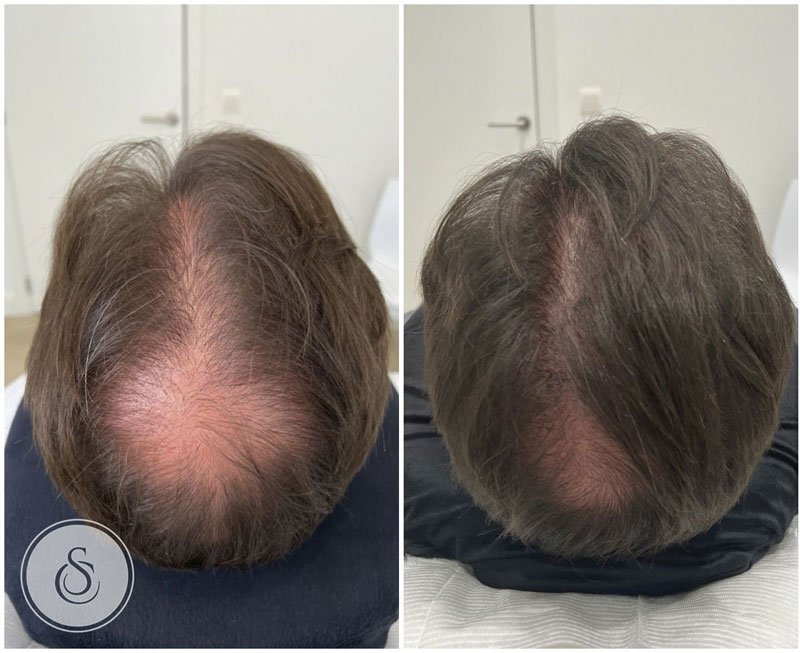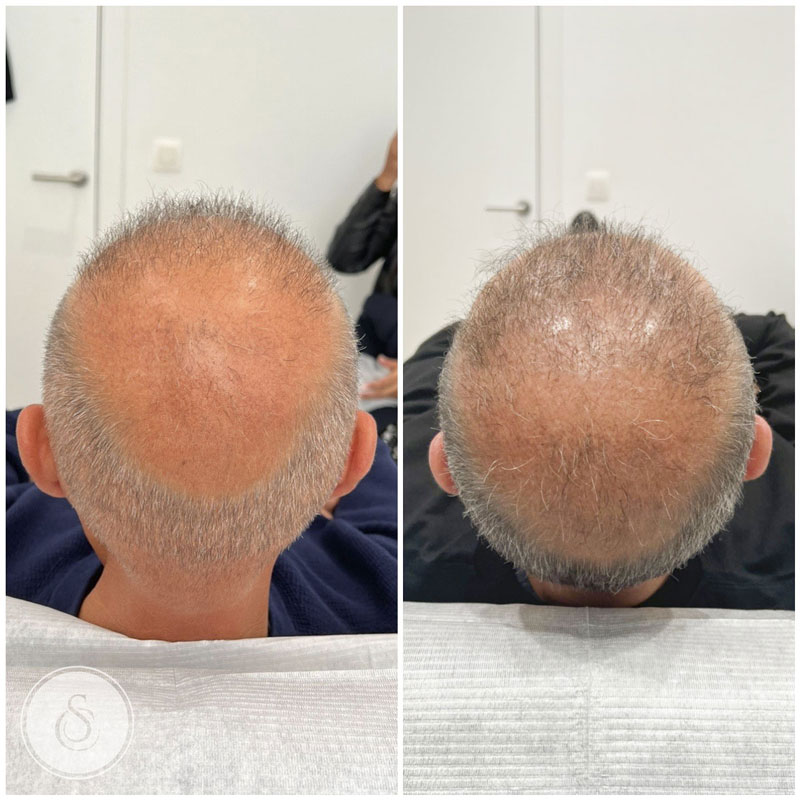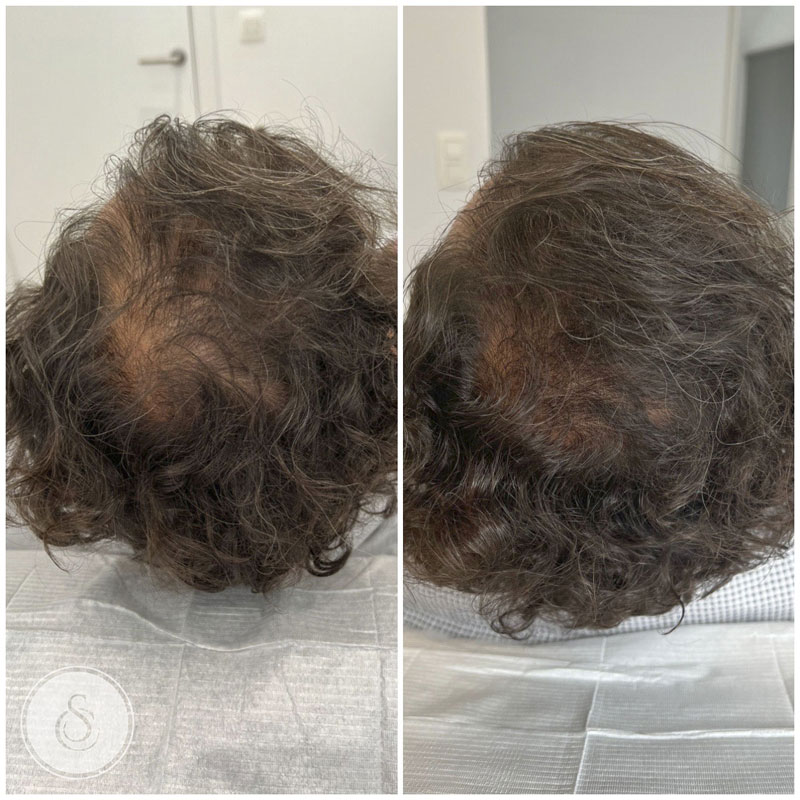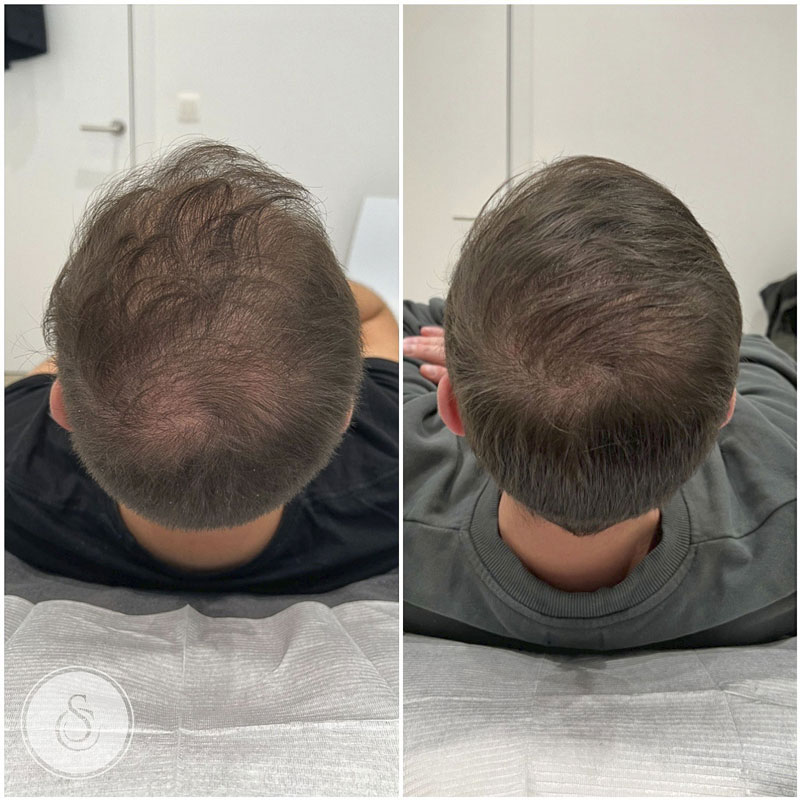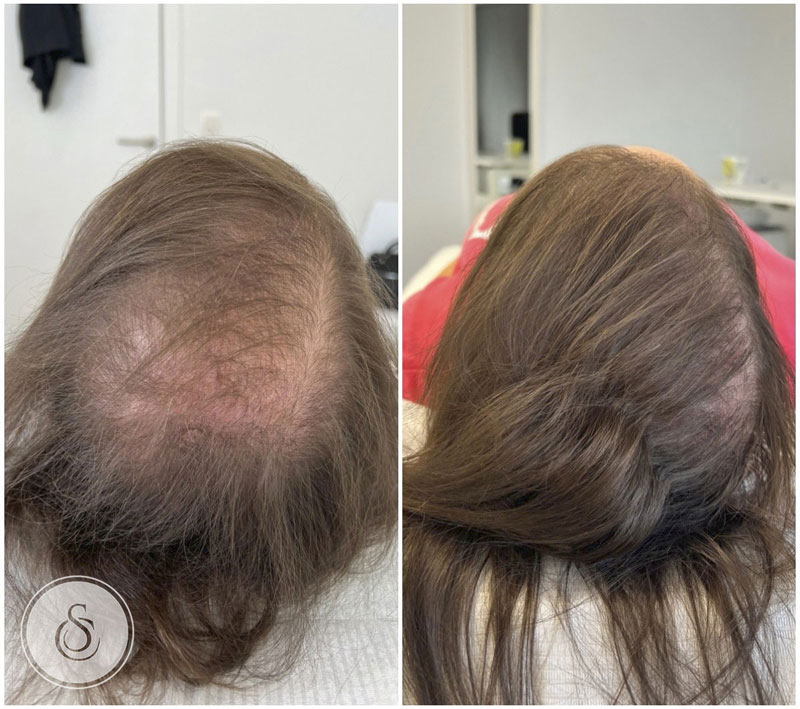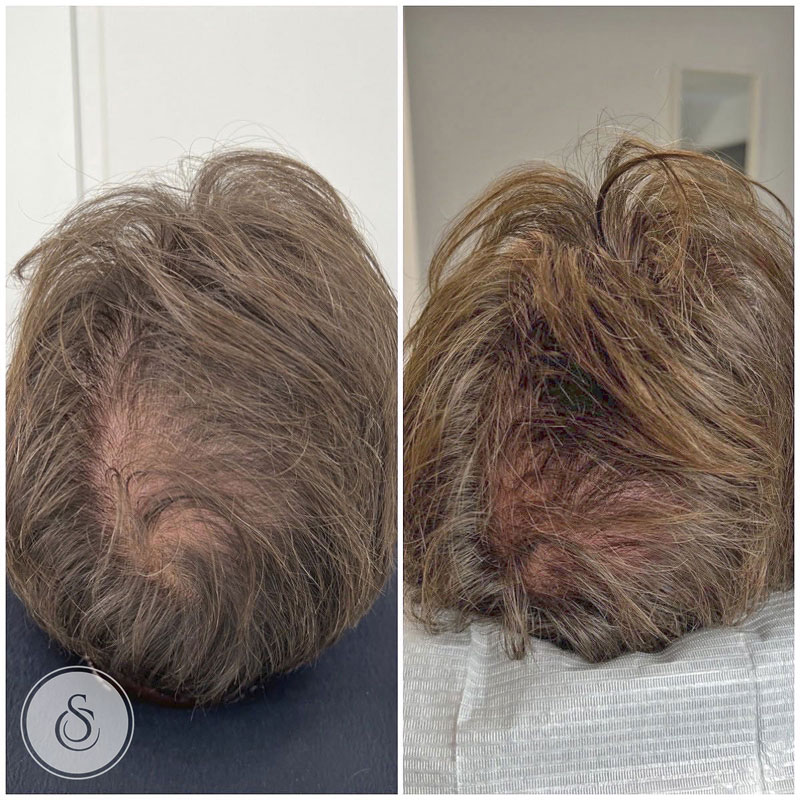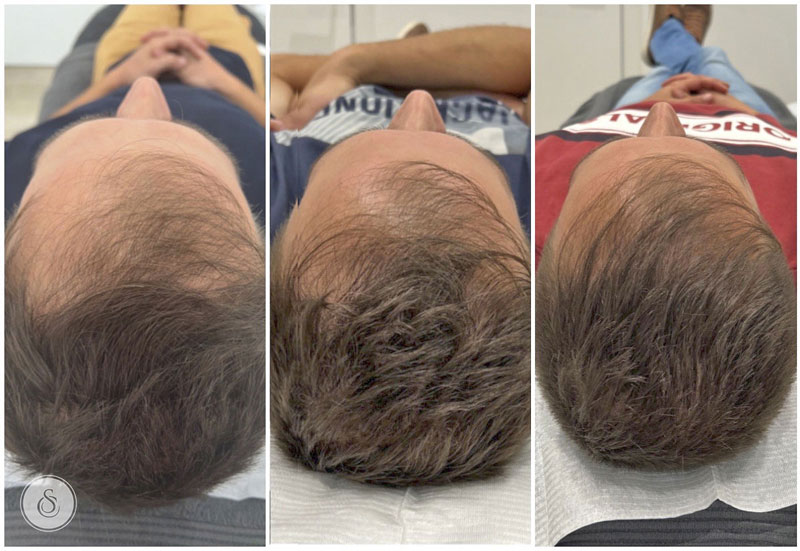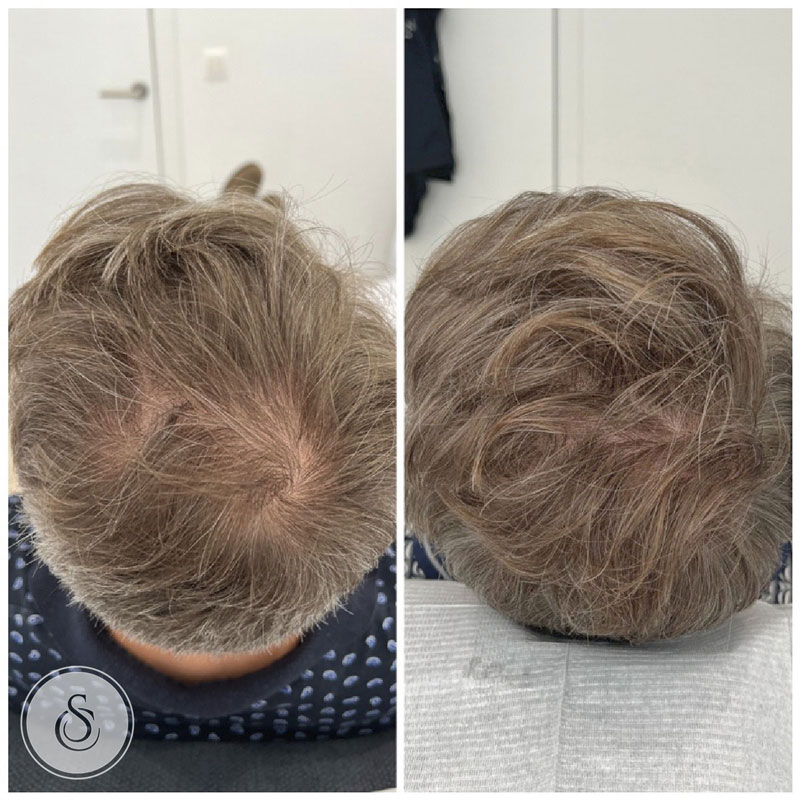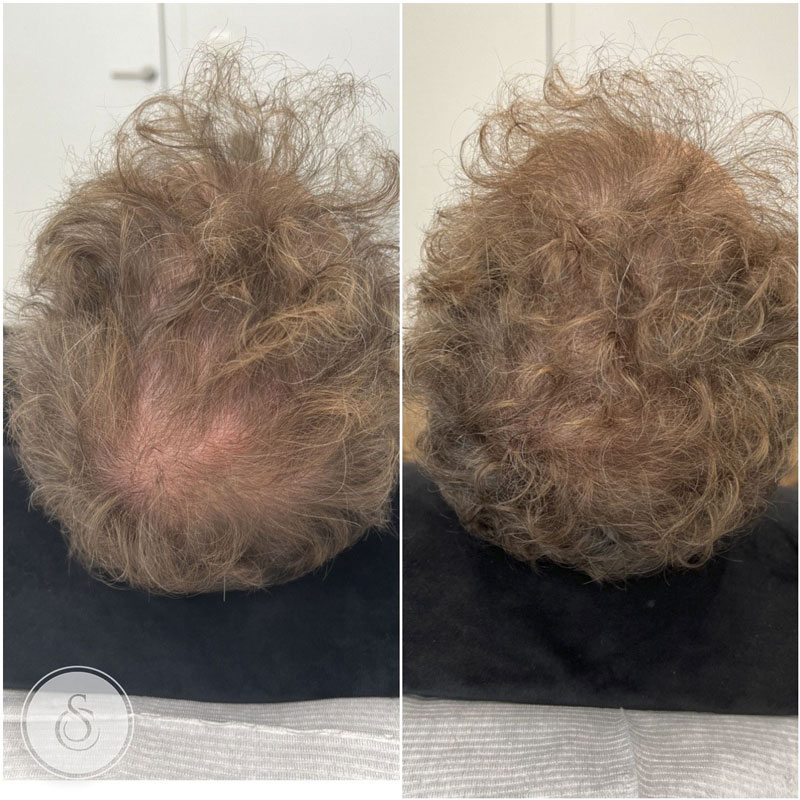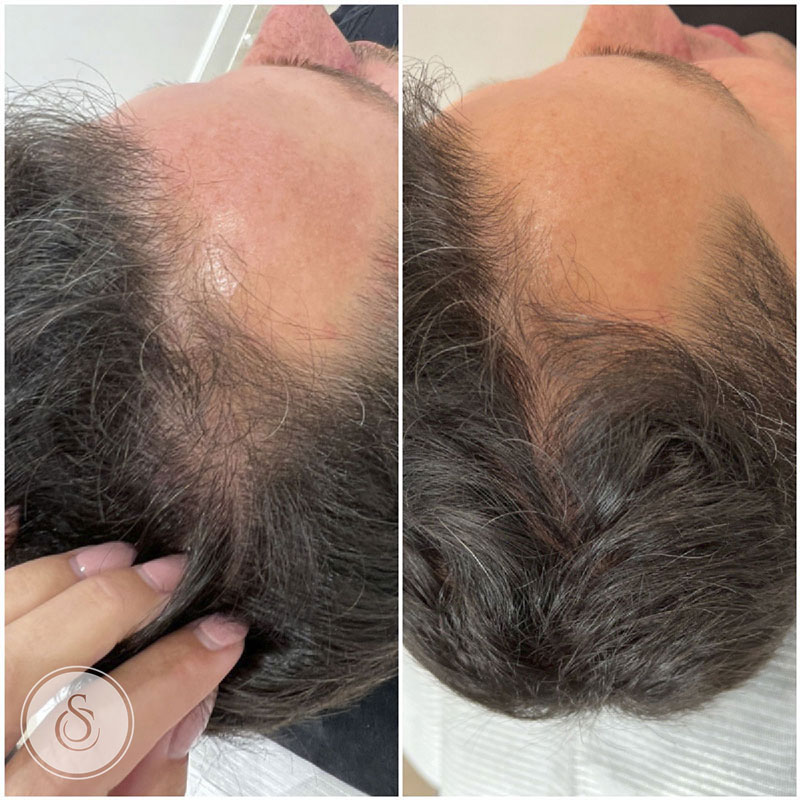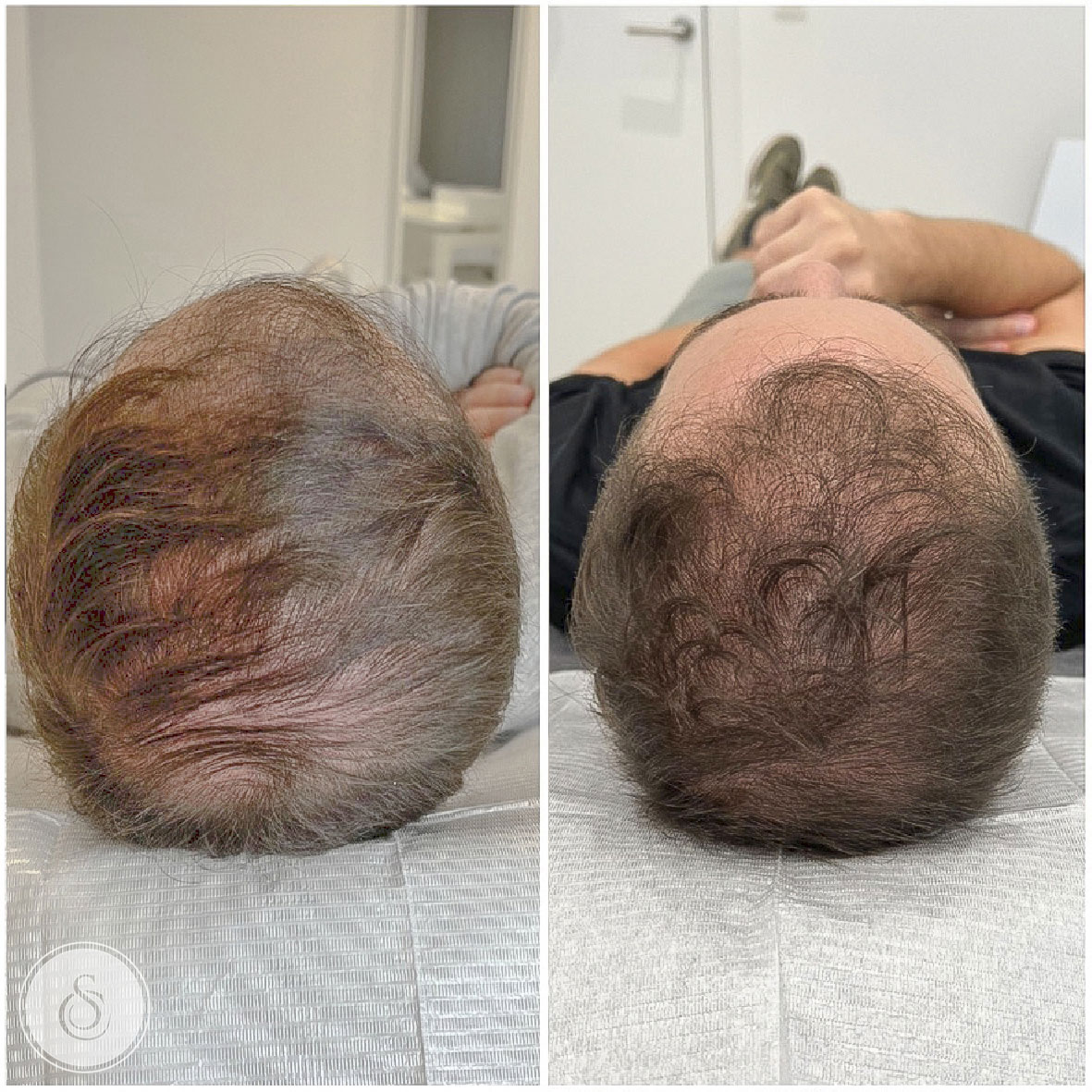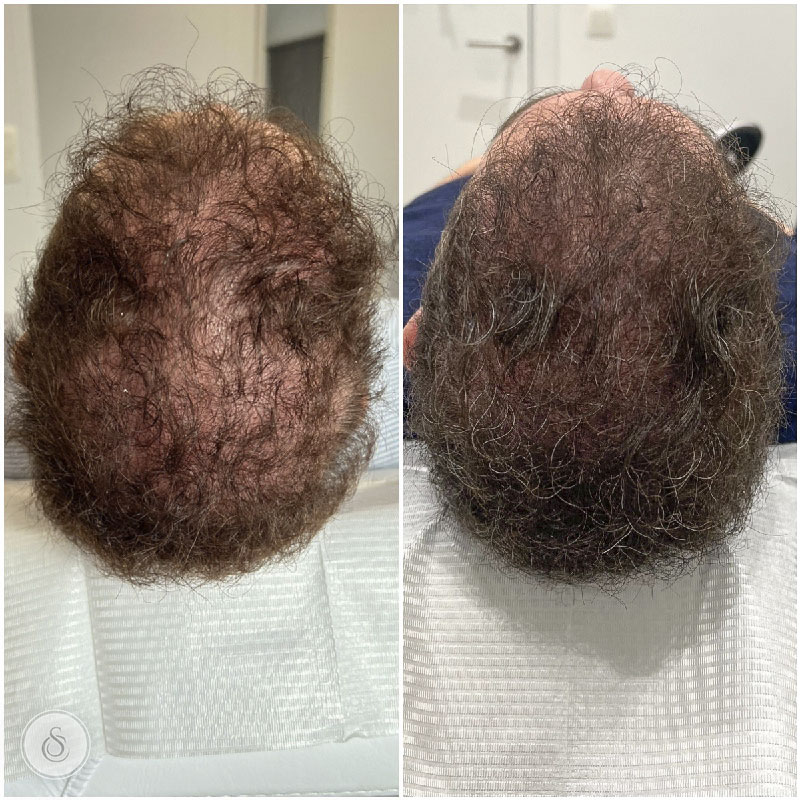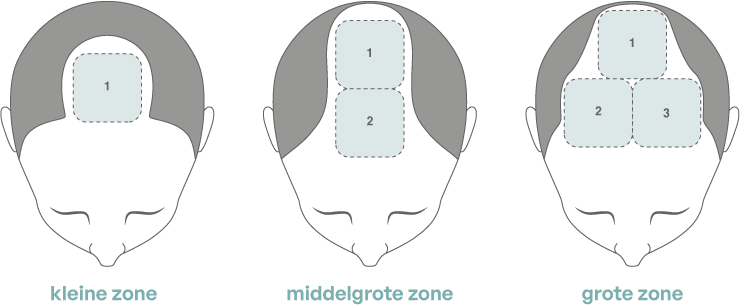Hair loss: what can you do about it?
Contrary to popular belief, hair loss occurs in both men and women. Moreover, we see that hair loss occurs in different age groups. About 70% of the population encounters hair loss sooner or later. Of course, it is not nice to find that you are losing hair.
You want nothing more than to keep your full head of hair, and preferably for as long as possible. Therefore, below we will discuss how to prevent and treat hair loss.
Hair growth under the microscope
New hair growth occurs approximately every three to five years. Hairs always grow from the same hair follicles. Up to four hairs can grow from one hair follicle. You continue throughout your life with the number of hair follicles you were born with. How many there are is genetically determined.
No new hair follicles are formed over the years. Once hair follicles are damaged, no new hair can grow from them. The fallen hair is then no longer replaced.
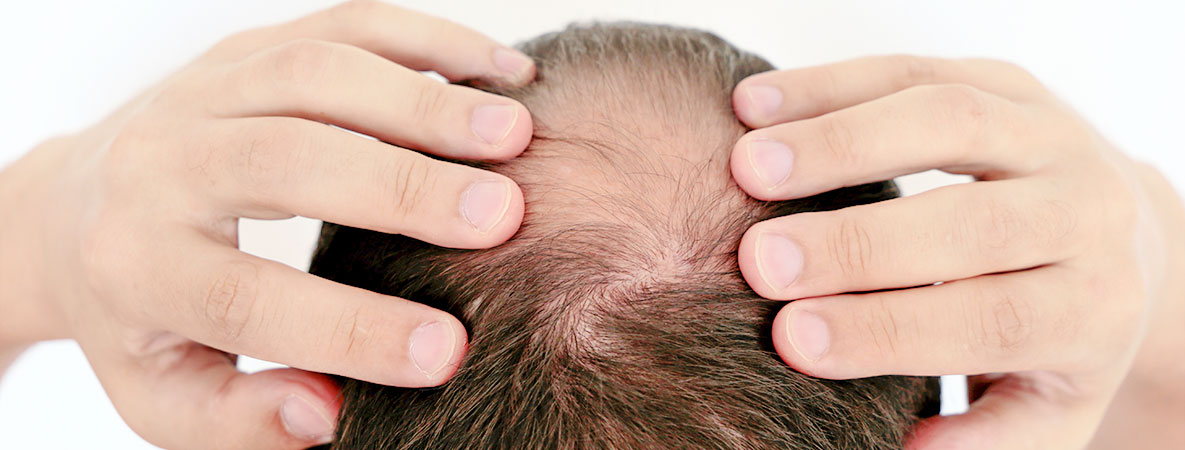
What are the causes of hair loss?
- Knowing the causes of hair loss may seem trivial, but in order to start an effective treatment, it is crucial to know the cause of your hair loss. After all, only then can you know what will work and what won't.
- Therefore, we list below the most common causes of hair loss. However, it is important not to self-diagnose. Do you have hair loss? If so, discuss with a doctor what the cause might be.
- Hair loss has several causes. The most common form of hair loss is hereditary baldness or androgenetic alopecia. This hereditary hair loss occurs mostly in men, but can also occur in women occur. Androgenetic alopecia causes a receding hairline and a bald spot on the crown in men. In women, this form of hair loss causes more diffuse hair loss.
- Then you also have alopecia areata or patchy hair loss. It is a form of temporary hair loss and occurs in men, women and children alike. This condition can be recognized by round, bald patches on the forehead.
- Diffuse baldness can be recognized by visibly thinning hair. This form spreads all over the scalp. It can occur after serious illnesses, taking certain medications, thyroid problems or other health problems.
- Next you have frontal fibrosing alopecia, a form of hair loss in women. This occurs in postmenopausal women, above the age of 50. This condition can be recognized by scarring of the hairline, which prevents hair from growing.
- Finally, you have traumatic baldness. This is caused by frequent wearing of tight ponytails. Dyeing your hair can also cause this.
Suffering from hair loss? Make an appointment at Sarasin Clinic and stop hair loss after just one treatment with our hair fillers.
When does one speak of hair loss?
One speaks of hair loss or alopecia when you lose more than one hundred hairs a day lose. The normal growth process of your hair is then disturbed and the new hairs are no longer sufficient to replace the hairs that have fallen out.
However, hair loss is not visible to the naked eye until half of the hair is already gone. So it takes some time before you actually notice the hair loss. So noticing your thinning hair in time is important to prevent and treat further loss.
Can you prevent hair loss?
Even better than stopping hair loss is preventing hair loss. But is that even possible? Well, an ultimate solution to prevent hair growth does not exist. However, there are some things you can look out for that also stimulate hair growth.
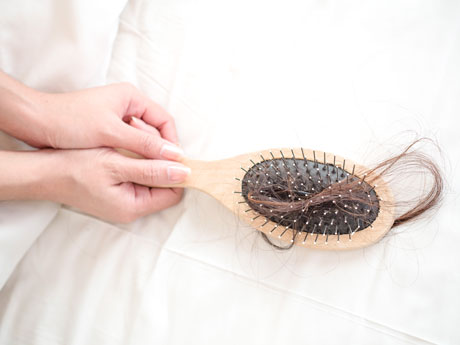
Healthy body, healthy hair
First of all, your health is important for a beautiful and full head of hair. Good health ensures healthy hair growth. So make sure you have a healthy diet and the necessary vitamins and minerals. Essential vitamins are vitamins B, C, D, E and B12.
Other nutrients such as iron, protein, zinc and omega-3 are also important for a full head of hair. To stimulate your hair growth, if needed, you can take extra supplements take. In doubt? Then talk to your doctor about it.
No stress...
It is important to reduce stress as much as possible. Taking adequate rest is therefore essential, but exercise can also reduce stress.
In fact, hair loss due to stress is caused by high levels of the hormones adrenaline and cortisol which in turn cause increased lactic acid production. Lactic acid is harmful to hair roots and can cause hair loss. Exercise allows this hormone to be broken down by the body and less lactic acid is present in the scalp.
Take care of your hair
Besides good health and low stress, there is another important component that determines the health of your hair: your hair care. Below we sum up for you what to look out for.
- Use caring shampoo and conditioner specially designed to combat hair loss
- Use shampoos that active ingredients that contain active ingredients to help fight hair loss and keep the scalp healthy.
- Never comb your hair when it is wet. This can actually cause your hair to break off.
- Ban plastic brushes from your bathroom. These make your hair static, making it more likely to damage your hair.
- Buy a brush with real hair. It's better for your scalp and hair.
- Too tight a bun or heat sources are best avoided. These cause hair to be pulled out, and heat can cause hair to become brittle and thus break off.
- Good blood circulation in your scalp is a must for healthy hair. You can stimulate this through a scalp massage. It has a positive impact on hair growth and prevents hair loss. The added benefit of a scalp massage is that it also reduces your stress.
While you can take all of these steps to prevent hair loss, that doesn't necessarily mean they are effective. A caring shampoo or the right brush won't stop stubborn hair loss.
Fortunately, there are other, natural remedies that will nip your hair loss in the bud. Want to know more? Then be sure to read on.
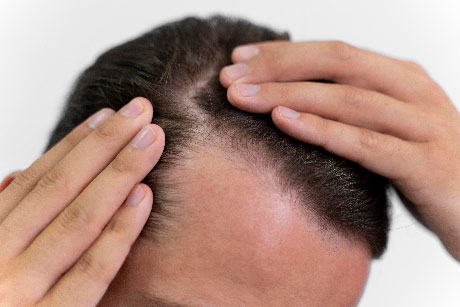
I have hair loss: what to do?
Keep suffering from hair loss or balding spots that won't go away? Then a treatment at Sarasin Clinic might provide the solution. Thanks to current medical developments, a great deal can already be done against hair loss in both women and men.
We offer two scientifically proven methods to stimulate hair growth and stop hair loss from the core: hair fillers and PRP. Wondering how these treatments can stop your hair loss? You'll find out below.
Hair fillers for healthy hair growth
Hair fillers combat hair loss and stimulate hair growth through an injection treatment. Seven different peptides are injected, each with a specific effect. As early as six weeks after the first session, results are visible and your hair loss process stops.
A total of about four sessions are required for optimal results. These sessions provide good blood circulation and activate hair cells, accelerating hair growth and reducing hair loss. It also improves hair density and hair thickness.
You can also get treated with hair fillers after a hair transplant. They can help you increase your hair density. Moreover, they can also increase the survival rate of your hair follicles.
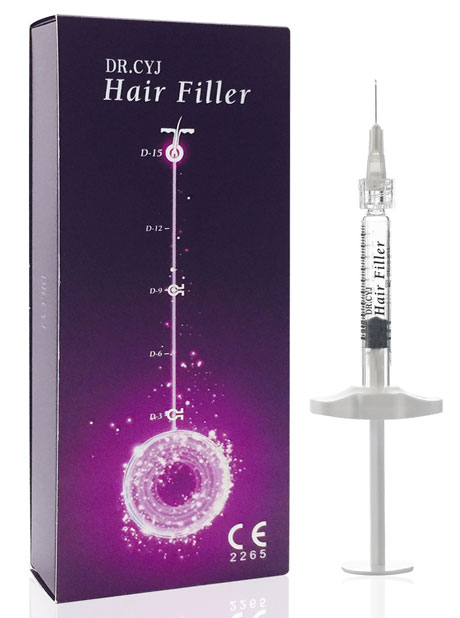
Hair fillers: for everyone?
Unfortunately, hair fillers are not for everyone, completely bald men will in fact not benefit from treatment with hair fillers.. They no longer have their own hair follicles, which thwarts the effectiveness of the treatment. Do you still have hair follicles? Then you are the right candidate for this innovative treatment!
Do you still have hair follicles? Well, if you still have a little hair, that means there are still hair follicles and therefore there is still hope. Even if the hairs are wafer-thin and transparent: where there is hair, there is hope!
Shiny, full hair? You can with hair fillers! Make an appointment today appointment at Sarasin Clinic.
Stimulating hair growth with PRP (Platelet Rich Plasma)
- PRP treatment involves isolating the body's own cells that contain many growth factors. That isolation is done through a blood draw. Then these are injected into the balding areas.
- Then the blood sample is centrifuged to separate the different blood components. From this, the PRP is extracted and this is injected back into the problem areas. The injections stimulate cell production and improve skin and hair quality.
- Since you are not injecting foreign substances, there is little chance of allergic reactions. PRP treatment can also improve the outcome of a hair transplant.
- Stimulate your hair growth and stop hair loss in the most natural way possible? That's what you do with PRP. Make your appointment at Sarasin Clinic.
Hopefully you now have a better understanding of what you can do to prevent and treat hair loss. Still have questions or doubts? Please feel free to contact with us or book a consultation with one of our experts.
Videos hair loss what to do
Before and after photos of hair fillers
Prices hair loss prevented with hair filler or prp
| Hair filler treatments prices | |
|---|---|
| Hair filler small zone (1ml) | €200/session |
| Hair filler medium zone (2ml) | €300/session |
| Hair filler large zone (3ml) | €400/session |
| PRP treatments prices | |
|---|---|
| PRP treatments | |
| PRP 1st session | €350/session |
| PRP 2nd session | €350/session |
| PRP last session (for 3 sessions total) | €250/session |
| PRP for the lips | €350/session |
| PRP skin improvement | €350/session |
| PRP against hair loss | €350/session |




